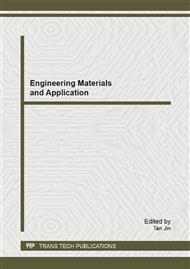[1]
I. Gibson, D. Rosen and B. Stucker: Additive manufacturing technologies: Rapid prototyping to direct digital manufacturing, Springer, London (2010), pp.47-51, 61-281.
DOI: 10.1007/978-1-4939-2113-3_3
Google Scholar
[2]
B. Stucker: Additive manufacturing technologies: technology introduction and business implications, Academy of Engineering, (2011), Information on http: /www. naefrontiers. org/File. aspx?id=31004.
Google Scholar
[3]
Laser sintering information, Information on www. lasersintering. com.
Google Scholar
[4]
W.M. Steen: Laser material processing, Springer, London (2003), p.279, 288, 351-355.
Google Scholar
[5]
I. Gibson and S. Dongpin: Material properties and fabrication parameters in selective laser sintering process, Rapid Prototyping Journal, Vol. 3, no. 4, (1997), pp.129-130.
DOI: 10.1108/13552549710191836
Google Scholar
[6]
J.A. Benda: Temperature-controlled selective laser sintering, (1994), Information on http: /utwired. engr. utexas. edu/lff/symposium/proceedingsArchive/Manuscripts/1994/1994-29-Benda. pdf.
Google Scholar
[7]
A. Salminen: The Filler Wire - Laser Beam Interaction during Laser Welding with Low Alloyed Steel Filler Wire, Mechanika, Nr. 4 (84), (2010), pp.67-74.
Google Scholar
[8]
Z. Qu, A. Salminen and T. Moisio: Seam tracking for Laser Welding Using Vision Sensors, International Journal of Materials & Product Technology, Vol. 11, No 3/4, (1996), pp.276-283.
Google Scholar
[9]
H. Fennander, V. Kyrki, A. Fellman, A. Salminen and H. Kälviäinen: Visual measurement and tracking in laser hybrid welding, Machine Vision and Applications, Vol. 20, No. 2, (2009), pp.103-118.
DOI: 10.1007/s00138-007-0111-1
Google Scholar
[10]
A. Stepanov, H. Piili and A. Salminen: Comparison of monitoring methods for laser beam paper material interaction, Proc. 7th int. Conf. Beam Technologies and Laser applications BTLA St. Petersburg state technical university, St. Petersburg, Russia, (2012).
DOI: 10.24937/2542-2324-2021-1-s-i-196-198
Google Scholar
[11]
S. Ruotsalainen, P. Laakso, M. Manninen, T. Purtonen, V. Kujanpää and A. Salminen: TWINQUASI – A New Method for Quasi-Simultaneous Laser Welding of Polymers, Proc. of 31st Int. Conference On Applications of Lasers and Electro Optics ICALEO12, Anaheim, CA, USA, Laser Institute of America, (2012).
DOI: 10.2351/1.5062454
Google Scholar
[12]
M. Vänskä, F. Abt, R. Weber, A. Salminen. and Graf T., Investigation of the keyhole in laser welding of different joint geometries by means of x-ray videography, Invited paper, Proc. of 31st Int. Conference On Applications of Lasers and Electro Optics ICALEO12, Anaheim, CA, USA, Laser Institute of America, (2012).
DOI: 10.2351/1.5062487
Google Scholar


